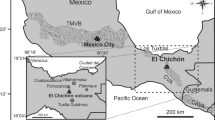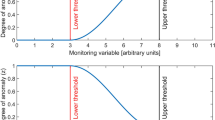Abstract
Event trees are useful frameworks for discussing probabilities of possible outcomes of volcanic unrest. Each branch of the tree leads from a necessary prior event to a more specific outcome, e.g., from an eruption to a pyroclastic flow. Where volcanic processes are poorly understood, probability estimates might be purely empirical – utilizing observations of past and current activity and an assumption that the future will mimic the past or follow a present trend. If processes are better understood, probabilities might be estimated from a theoretical model, either subjectively or by numerical simulations. Use of Bayes' theorem aids in the estimation of how fresh unrest raises (or lowers) the probabilities of eruptions. Use of event trees during volcanic crises can help volcanologists to critically review their analysis of hazard, and help officials and individuals to compare volcanic risks with more familiar risks. Trees also emphasize the inherently probabilistic nature of volcano forecasts, with multiple possible outcomes.
Similar content being viewed by others
Author information
Authors and Affiliations
Corresponding author
Rights and permissions
About this article
Cite this article
Newhall, C., Hoblitt, R. Constructing event trees for volcanic crises. Bull Volcanol 64, 3–20 (2002). https://doi.org/10.1007/s004450100173
Received:
Accepted:
Published:
Issue Date:
DOI: https://doi.org/10.1007/s004450100173




